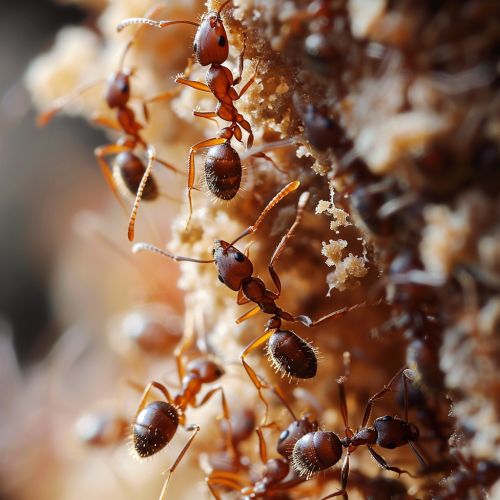Swarm Intelligence
Introduction
Swarm intelligence (SI) is a field of artificial intelligence (AI) that is based on the collective behavior of decentralized and self-organized systems. SI systems are typically made up of a population of simple agents interacting locally with one another and with their environment. The inspiration often comes from nature, especially biological systems. The agents follow very simple rules, and although there is no centralized control structure dictating how individual agents should behave, local interactions between such agents often lead to the emergence of global behavior. Examples of systems like this can be found in nature, including ant colonies, bird flocking, animal herding, bacterial growth, and fish schooling.
Characteristics of Swarm Intelligence
The primary characteristics of swarm intelligence systems are the lack of a centralized control structure and the simple behavioral rules followed by the individual agents. These systems are typically robust and flexible, able to adapt to changing environments and to continue functioning even when individual agents fail. They are also scalable, able to accommodate increases in the number of agents without a corresponding increase in complexity or decrease in performance.


Swarm Intelligence in Nature
Swarm intelligence is a common trait in many species. The most commonly cited examples are social insects such as ants, bees, wasps, and termites. However, swarm intelligence is also exhibited by other animals, such as birds, fish, and even some mammals.
Ant Colonies
Ant colonies exhibit remarkable examples of swarm intelligence. Individual ants are relatively simple creatures with limited capabilities, yet a colony of ants can accomplish complex tasks such as finding the shortest path to a food source, dividing tasks among workers, and building complex structures. This is possible because ants communicate with each other using pheromones, allowing them to work together in a coordinated manner.
Bird Flocking
Birds, particularly starlings, exhibit swarm intelligence through their flocking behavior. A flock of birds can change direction and speed almost instantaneously, reacting to threats and changing environmental conditions. This is possible because each bird follows simple rules related to the position and velocity of its neighbors.
Fish Schooling
Fish also exhibit swarm intelligence through their schooling behavior. A school of fish can change shape and direction quickly and seemingly without any central control. This is possible because each fish follows simple rules related to the position and velocity of its neighbors.
Swarm Intelligence in Artificial Intelligence
Swarm intelligence has been applied in various fields of artificial intelligence, including optimization, data analysis, and robotics.
Optimization
In optimization, swarm intelligence algorithms such as the Particle Swarm Optimization (PSO) and Ant Colony Optimization (ACO) have been developed. These algorithms are based on the behavior of bird flocks and ant colonies, respectively, and have been used to solve complex optimization problems.
Data Analysis
In data analysis, swarm intelligence has been used in clustering and classification tasks. Algorithms such as the Ant Colony Optimization for Clustering (ACOC) and the Particle Swarm Optimization for Clustering (PSOC) have been developed and used to group similar data points together.
Robotics
In robotics, swarm intelligence has been used to develop swarm robotics, where a group of robots work together to accomplish a task. These robots follow simple rules and communicate with each other to coordinate their actions.
Advantages and Disadvantages of Swarm Intelligence
Swarm intelligence systems have several advantages over traditional centralized systems. They are robust, as the failure of one agent does not significantly affect the performance of the system. They are also flexible, able to adapt to changing environments and tasks. Furthermore, they are scalable, able to accommodate increases in the number of agents without a significant increase in complexity or decrease in performance.
However, swarm intelligence systems also have some disadvantages. They can be difficult to design and implement, as the behavior of the system is emergent and not directly controllable. They can also be unpredictable, as small changes in the behavior of individual agents can lead to large changes in the behavior of the system as a whole.
Future of Swarm Intelligence
The future of swarm intelligence looks promising, with many potential applications in various fields. In particular, swarm robotics is a rapidly growing field, with potential applications in search and rescue, environmental monitoring, and military operations. Furthermore, swarm intelligence algorithms are being increasingly used in optimization and data analysis tasks, with potential applications in logistics, scheduling, and machine learning.
See Also
Artificial Intelligence Optimization Robotics
